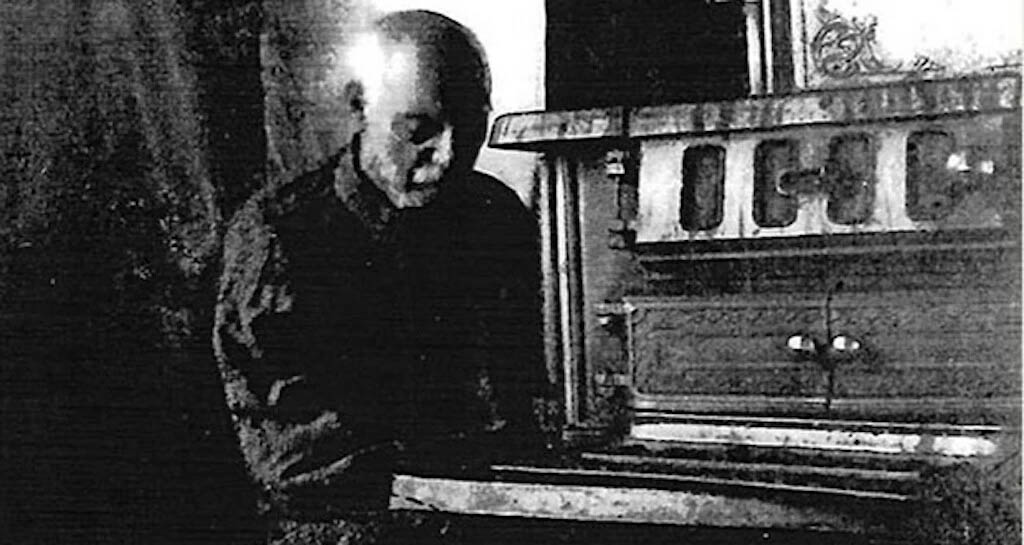Jerome of Sandy Cove never gave up his secrets.
The name Jerome, also written Jérôme, was given to an unnamed man found on Sandy Cove, Nova Scotia, beach on September 8, 1863. He lived from approximately the 1830s to April 15, 1912. When locals questioned him, he gave very little information, implying that he did not know French or English. He was discovered with both of his legs amputated to stumps. He stammered something that sounded like “Jerome” when asked for his name, and that’s how people came to know him.
George Colin “Collie” Albright, an 8-year-old, discovered him and took him to his family’s Digby Neck house so that he might be healed. Jerome had both of his legs severed just above the knees, indicating that the procedure was performed by a qualified physician. When he was located, the stumps were still wrapped and only partially healed. He was also ill from exposure and the weather.
It was learned from the many curious persons who visited his sick bed that he was unable to grasp French, Latin, Italian, or Spanish, or that he had no desire to do so. Seemingly avoiding the attention of these inquisitive bystanders, he growled like a dog at intruders.The individual was described as having a Mediterranean appearance and having hands that were too soft for him to work physical labour.
The Albrights found it difficult to provide for another mouth to feed, so Jerome was moved around from house to house for a period. Eventually, the mostly Baptist hamlet of Digby Neck concluded that Jerome must be a Catholic based on his appearance and sent him to the nearby French community of Meteghan. Additionally, the Nova Scotian government approved a special two-dollar weekly stipend to help Jerome. As the society persisted in attempting to break through his largely silent state, Jerome was placed under the care of multilingual Corsican deserter Jean Nicola. Though Nicola was unable to convince him to communicate, Jerome remained in the Nicola residence for a further seven years, winning over the ladies of the house, including Madeleine, his stepdaughter, and Jean’s wife Julitte.
Following Julitte Nicola’s passing, her husband left for Europe, and Jerome moved in with Dedier and Zabeth Comeau in Saint Alphonse de Clare, which is close to Meteghan. Taking advantage of Jerome’s relative celebrity, the Comeaus charged admission to visit the mystery man and made a comfortable living off of this in addition to the government stipend. Jerome, however, seemed unaffected and remained there until his passing on April 15, 1912.
Legacy and Possible Explanations
According to several theories, Jerome was a sailor who might have tried to revolt and was sentenced to amputation. He might have been the heir to a fortune who was “gotten rid of” to make room for someone else who wanted his inheritance, according to another theory.
Jerome’s speech impediment may be related to a brain damage, most likely in the area of the brain known as Broca’s, which controls speech. Jerome would never have been able to communicate in a language that anyone could comprehend. Jerome’s capacity to mimic animal sounds but not human speech could be explained by this.
Jerome has been a prominent figure in Nova Scotian popular culture, and numerous books have been produced about the case. The 1994 feature film Jerome’s Secret (Le secret de Jérôme), directed by Phil Comeau, tells the story of Jerome. Denis Lapalme, a former Paralympic athlete from Canada, played Jerome in the movie. It won fifteen prizes globally.
Yarmouth, Nova Scotia-based historian Fraser Mooney Jr. released a book titled Jerome: Solving the Mystery of Nova Scotia’s Silent Castaway in 2008. Mooney provides an explanation for the man’s enigmatic beginnings in this book. According to him, a young foreigner was said to have fallen through river ice near Chipman, New Brunswick in 1859, a few years prior to Jerome’s arrival. This occurred on the other side of the Bay of Fundy. After the injury, he developed gangrene in both legs, necessitating their amputation by a local physician. Here, he earned the nickname “Gamby,” most likely as a result of his constant cries for “leg,” or “gamba,” upon waking up.
The residents of Chipman found Gamby to be an inconvenience, and there were rumours that a schooner captain who was passing by was bribed to take him away. It’s possible that the skipper simply sailed to Nova Scotia on the other side of the harbour, where he became an issue for Sandy Cove. Mooney’s story has generated debate. Notably, author Noah Richler has referred to the book as fiction and speculative. Official government records exist regarding Gamby, and multiple eyewitnesses at the time agreed that Gamby and Jerome were the same individual.








